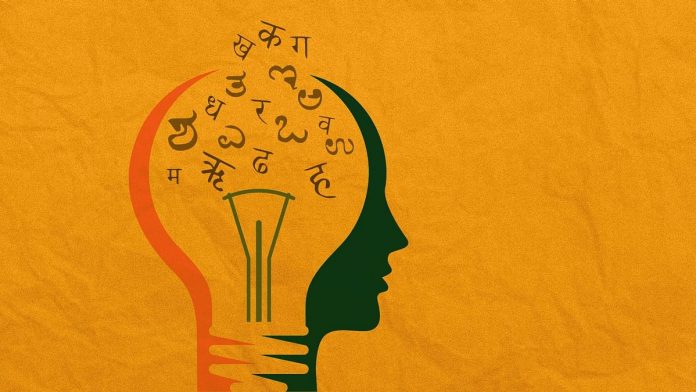This article is written by Anusha Misra from NALSAR University of Law. This article evaluates the commercialization of education in India.
Table of Contents
Introduction
The advent of the commercialization of education in India has been fairly recent. It stems from the reforms made in the educational sector in the past two decades. It manifests itself in flourishing private schools, public schools, and private universities and at the higher education level. The commercialization of education brings in a financial aspect thereby affecting millions of families. It also brings about a change in the traditional concept of education. The happenings of the education sector depend on the socio-economic development of the country. With modernization and globalization, the attitude towards teaching and learning has also been impacted.
What is the commercialization of education
Commercialization is defined as the process by which a product is introduced in the general market. Commercialization of education is when the primacy given to the humanities decreases and the attention to the demand of students increases. Education thus moves towards being business-oriented. Commercialization leads to schools competing to provide quality education at a reasonable price. Commercialization of education leads to the direction of education being in the hands of students and teachers.
Reasons for commercialization of education in India
The basic reason for the commercialization of education is measured by the amount of money invested in education. It is assumed that the more the popularity of a school, the better the education it provides. This mentality is very evident in India. In addition to that, India faces a high level of competition in the education sector on a global level. Thus, schools have adopted the strategy of increasing fees to gain popularity. The government is not able to curb such malpractices due to insufficient funds. With the entry of foreign universities solely whose sole aim is profit-making, more pressure is added on Indian universities to increase their fees.
Another reason for the commercialization of education in India is the rise in the number of private educational institutions with the increase in population. The number of students pursuing secondary education in India is drastically increasing every year thus this leads to a good opportunity for educational institutions with the agenda of profit-making. Albeit the government is committed to providing primary education and certain cesses for higher educational institutions, there is vast privatization in the educational sector.
Merits of commercialization of education
While the commercialization of education has many disadvantages, it has many advantages as well. Listed below are some of the advantages.
Employment opportunity
The commercialization of education increases employment opportunities. It provides job guarantees to students as many private institutions offer courses that are job-oriented that help students to engage in jobs and this leads to the vocalization of their skills. Due to the commercialization of education, various organizations such as the General Agreement on Trade in Services (GATS) provide students with the opportunity to pursue professional courses in foreign institutions. In addition to this, teachers and lecturers are also engaged in job opportunities abroad. Thus, the commercialization of education reduces the problem of unemployment in the country.
Economic development
Commercialization of education brings in economic development. Commercialization of education helps in improving literacy rates that is a major indicator of economic development. In addition to this, commercialization also improves the gross domestic product of the country which is another indicator of economic development. Hence, the commercialization of education contributes to the economic development of a country.
Ability to overcome global challenges
Commercialization of education assists with confronting the worldwide difficulties of the world. The worldwide difficulties are modernization, industrialization, privatization, globalization, data, and so on. Commercialization of education helps the students in gaining suitable information about the benefits of innovation. By virtue of the development of an international information network, the role of the English language, and so forth, the commercialization of training helps the students to gain suitable information about the benefits of innovation. The difficulties, how to embrace it, how to help, and so forth give interest to preparation that can be applied in reality. For this, several educational organizations have changed the curriculum and educational plan to address the new worldwide difficulties.
Personality development
Commercialization of education fosters the personality development of the students. Commercialization of education provided students with formal education. In order to develop the persona of students, they are provided with or taught moral education. Subjects like moral science are also included. This leads to the personality development of students.
Development of society
Commercialization of education leads to social development. For the development of a country, social development is very necessary. In educational institutions, students are conferred with skills that inevitably lead to their social development. Through education, students develop social skills. Thus, the commercialization of education helps in social development and provides education based on the needs of society.
Demerits of commercialization of education
The disadvantages of the commercialization of education are listed below.
More emphasis on marks
The commercialization of education leads to more emphasis on marks. Rather than focus on the development of children, students are forced to focus solely on academics. In most institutions, parents fall victim to the farce of commercial and vocational studies.
Inability to maintain the principle of quality
The commercialization of education can’t keep up with the rule of equality. In the public arena, there are three kinds of individuals – high society individuals, working-class individuals, and lower-class individuals. Because of the commercialization of the schooling framework, the destitute individuals, just as the more fragile segment of the general public, do not have the option to get an education because of the high pace of expenses in conceding the students. Rich individuals will only have the option to get educated since they have the ability to go through a high measure of cash.
Profit oriented
The commercialization of education focuses only on the profit-making ability of the education sector. It transforms the education sector into a business. Many schools for example have canteens and cafes which provide schools with an opportunity to make more money. This is a perfect example of commercialization.
High cost
The impact of the commercialization of education makes education very costly. In many private institutions, the fees are very high making it very inaccessible. With the advent of the commercialization of the education sector, students are seen merely as consumers.
Materialistic outlook
The commercialization of education has led to students developing a materialistic outlook. The students then tend to develop a selfish attitude rather than focussing on the development of the country.
Response of the judiciary
In the case of Pradeep Jain v. Union of India (1984), the Supreme Court recognizing the right to education determined that anyone is entitled to own equal probability for admission to any educational course for their cultural growth, coaching facility speciality, speciality, or employment. In the case of Bandhua Mukti Morcha v. Union of India (1983), the Supreme Court had to decide what constitutes human dignity. The court set down basic constituents of human dignity including the right to induce education facilities also.
In cases like Pradeep Jain and Bandhua Mukti Morcha, the court emphasised the right to education however in these cases the opinion of the court was simply the obiter dicta, hence they were not binding.
The case of Unni Krishnan v State of Andhra Pradesh (1993), recognized that the value of education might vary, even at intervals, from establishment to establishment. The facilities providing equipment, infrastructure, commonplace, and quality of education might vary from establishment to establishment. It is submitted that the fee structure approved by the Supreme Court for skilled courses led to the development of education in skilled courses. The effective due process may be higher appreciated taking any state wherever unaided non-public skilled faculties exist.
Response of the government
The Government has taken different measures to check the commercialization of advanced education. As needs are, the UGC has given the UGC Establishment and Maintenance of Standards in Private Universities, 2003. Para 3.9 of these guidelines gives that “the confirmation methodology and obsession of charges will be as per the standards/rules recommended by the UGC and other concerned legal bodies. The UGC has additionally given the UGC (Institutions Deemed-to-be Universities) Regulations, 2010. The charge structure will be shown in the plan and on the foundation’s site”. The UGC has additionally given the UGC (Institutions Deemed-to-be Universities) (Amendment) Regulations, 2014. As per these corrected guidelines, the considered to be colleges need to obligatorily distribute a prospectus before the beginning of confirmation measure showing the subtleties of the charge structure, the number of seats supported for each course, as far as possible endorsed for up-and-comers and so on The guidelines forbid such colleges from distributing any commercial inciting understudies for taking affirmation professing to be perceived by fitting power where it isn’t so perceived.
Recommendations
Listed below are certain recommendations to ensure that the demerits of commercialization of education do not overshow the merits.
Establish a learning society
As we move towards a learning society, each human action will require commitments from specialists and this will put the whole area of advanced education in sharp core interest. Albeit the needs, which are being allocated today to the assignment of instruction for all, will keep on being prevalent, the nation should set itself up to put increasingly more in training and at the same time, measures should be taken to refine, broaden and redesign advanced education and examination programs.
Adopt innovative practices
The new advances offer immense freedoms for progress in varying backgrounds. It offers openings for monetary development, improved wellbeing, better help conveyance, improved learning, and socio-social advances.
To mobilize resources
The decline in public funding in the last two plan periods has resulted in serious effects on standards due to increasing costs on non-salary items and emoluments of staff, on the one hand, and declining resources, on the other. Effective measures will have to be adopted to mobilize resources for higher education. There is also a need to relate the fee structure to the student’s capacity to pay for the cost. So, students at lower economic levels can be given highly subsidized and fully subsidized education.
Student-centric education and dynamic methods
Techniques for training additionally must be proper to the requirements of figuring out how to get the hang of, figuring out how to do, figuring out how to be, and figuring out how to turn into. Understudy focus schooling and work of dynamic strategies for instruction will require instructors’ new perspectives and new abilities. Strategies for educating through talks should be subordinate to the techniques that will lay weight on self-study, individual discussion among educators and understudies, and dynamic meetings of courses and workshops. Techniques for distance schooling should be utilized for an immense scope.
To provide job-oriented courses
All-round advancement of character is the motivation behind education. In any case, the present-day training is neither giving genuine information on life nor improving the ability of an understudy by which one can accomplish shrubs in the field one is intrigued by. Along these lines, a blend of expressions subjects and software engineering, science and humanities or writing ought to be presented so that such courses could be helpful for the understudies to tackle responsibilities after enlistment in certain organizations which would diminish superfluous hurry to advanced education. The program should be centred around graduate examinations and exploration and creating methodologies and components for the fast and proficient exchange of information and its application to explicit public and neighbourhood conditions and needs. Commendable doctoral understudies ought to be perceived through showing assistantships with allowances far beyond the examination corporations. At long last, because of information, just a dream of things to come life and work can be had; in light of this vision just an expansive aspiration can be fixed for oneself, and dependent on this desire just one can lead fascinating life doing the fantastic task to take care of astounding accomplishments in some field on the planet.
Conclusion
Privatization or commercialization contrarily affects the education sector, society, and monetary development of India. Without privatization or commercialization, education can’t occur. Schooling is to draw out the potential in a student by furnishing the student with the most suitable physical and social climate to assist them with understanding their fullest potential. Then again, education is an industry and its commercialization or privatization is staying put. Eventually, we can say that for these individuals schooling has today become a choice to bring in cash rather than giving quality instruction to understudies.
References
- http://oaji.net/articles/2016/1707-1457180816.pdf
- https://citejournal.org/volume-2/issue-2-02/social-studies/education-and-commercialization-raising-awareness-and-making-wise-decisions/
LawSikho has created a telegram group for exchanging legal knowledge, referrals, and various opportunities. You can click on this link and join:
 Serato DJ Crack 2025Serato DJ PRO Crack
Serato DJ Crack 2025Serato DJ PRO Crack











 Allow notifications
Allow notifications



